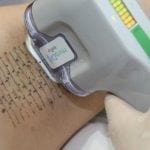Laser Tattoo Removal
An increasing number of people are now looking to have tattoos removed, for a wide variety of reasons. Perhaps the results were not as good as they had hoped for, the tattoo could be a name that they no longer want as a permanent reminder on their body, or perhaps they simply changed their mind. Until recently, the only option for hiding a tattoo was to have it covered with more ink, but advances in laser treatment have now made it possible to remove the tattoo completely.
Tattoo removal is now carried out using a specific type of laser known as a Q-switched laser. These have been available since the 1990s, when the removal of tattoos first began to be successful. The darker the ink, the easier it is for it to be completely removed, which may be the opposite of what you expect. The laser breaks down the chemical compounds in the ink, and these can be absorbed by the body. This is a mimicking of the natural fading process that occurs over time, with the laser simply causing it to occur more rapidly.
Tattoo removal will require several sessions of treatment with the laser, in order to ensure that the ink has been fully broken down. It is generally advised to have eight weeks of recovery time between each treatment, which will allow the fading to take place.
Patients undergoing tattoo removal will generally be offered a local anaesthetic to reduce the pain, although some choose not to have this. Temporary changes in the skin pigmentation are often seen immediately following treatment, and may take up to a year to resolve.
*Individual results may vary




